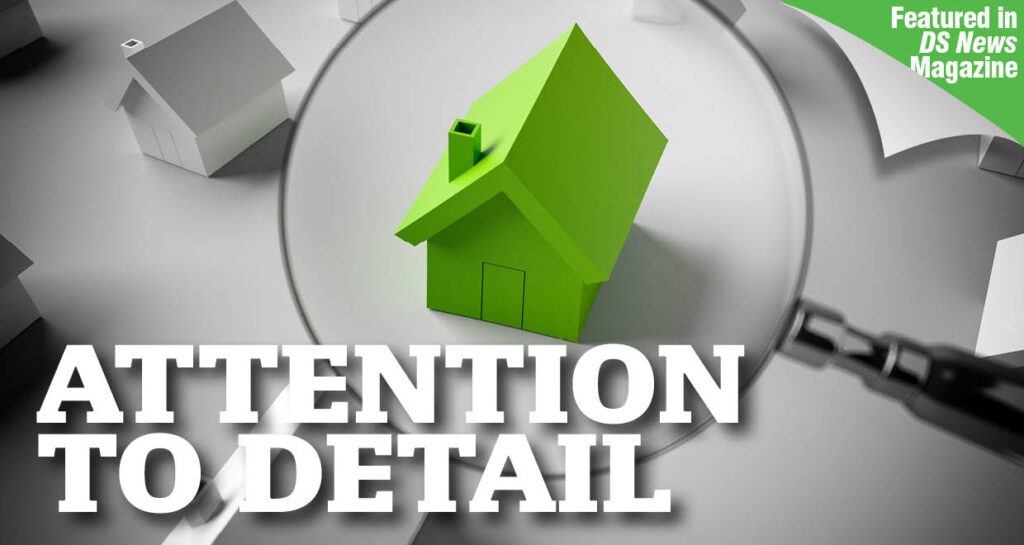
During the pandemic lockdown, an unprecedented number of borrowers suddenly entered into forbearance plans as state and local governments issued stay-at-home orders, shutting down economies and preventing many Americans from being able to go to work.
As their income was reduced or even eliminated amid the layoffs and business closures that ensued, homeowners were unable to make their mortgage payments. But the federal government quickly mobilized in order to prevent the next housing crisis.
Servicers were required to offer forbearance plans to consumers with federally-backed mortgages who were affected by COVID-19, but no proof of hardship was required from these borrowers. Even those not eligible for forbearance couldn’t be foreclosed on due to an eviction freeze put in place by the Consumer Financial Protection Bureau (CFPB).
However, many questions arose.
Forbearance shouldn’t impact a homeowner’s credit score, but could it be noted on their credit report, making it difficult to secure any new loans? Could borrowers still refinance their mortgage as interest rates plummeted in order to lower their monthly payments? Could new homebuyers buy a home and enter forbearance immediately afterward? How would the money from the missed payments get paid back?
Although these questions created confusion when forbearance was first instated, the Federal Housing Finance Agency (FHFA) and other housing agencies have since issued more guidelines, and given mortgage lenders and servicers time to prepare their systems for the end of forbearance periods.
Now, as an increase in loss mitigation efforts is being required of servicers to help borrowers choose the best option after their forbearance ends, on the back of FHFA guidance, the CFPB will likely see an opportunity to switch to full loss mitigation enforcement mode. This is all about the timing for the consumer regulator. As a reminder, forbearance was available to be extended for loans backed by Fannie Mae and Freddie Mac for 18 months. Many of the borrowers who entered forbearance near the beginning of the pandemic have since emerged from these forbearance periods.
Also, the CFPB’s eviction freeze ended at the conclusion of 2021.
Now, lenders and servicers will need to double down on their due diligence efforts in order to best serve their borrowers and avoid unwanted attention from the CFPB, which is watching the market closely.
Regulators Watch for Equitable Treatment of Borrowers
The CFPB announced in March that it is changing its supervisory operations in order to better protect from illegal discrimination in the financial space. The Bureau said it will scrutinize discriminatory conduct that violates the federal prohibition against unfair practices. It said it will go beyond even where fair lending laws apply. The Bureau said consumers can be harmed by discrimination, even if it is unintentional. It said it will examine for discrimination in all consumer finance markets including credit, servicing, collections, consumer reporting, payments, remittances, and deposits.
“When a person is denied access to a bank account because of their religion or race, this is unambiguously unfair,” CFPB Director Rohit Chopra said. “We will be expanding our antidiscrimination efforts to combat discriminatory practices across the board in consumer finance.”
The CFPB previously warned servicers to prepare for the end of forbearance, saying “unprepared is unacceptable.” It said servicers should begin taking the necessary steps to prevent “avoidable foreclosures.”
“There is a tidal wave of distressed homeowners who will need help from their mortgage servicers in the coming months,” former CFPB Acting Director Dave Uejio said at the time. “Responsible servicers should be preparing now. There is no time to waste, and no excuse for inaction. No one should be surprised by what is coming. Our first priority is ensuring struggling families get the assistance they need. Servicers who put struggling families first have nothing to fear from our oversight, but we will hold accountable those who cause harm to homeowners and families.”
The CFPB has made its views clear: servicers should have their loss mitigation efforts prepared in advance in order to help homeowners. The FHFA released a list of loss mitigation options for its borrowers, saying those with loans backed by Fannie Mae or Freddie Mac can emerge from forbearance via:
- A lump-sum payment of what was missed;
- A repayment plan that increases monthly payments until the missed payments are paid back;
- A permanent loan modification to help lower monthly payments; or
- A deferral to pay back the missed payments by adding them on to the end of the loan.
Servicers who are not prepared to work with their borrowers and walk them through these options could face serious consequences from the CFPB; these are the types of issues the CFPB could begin scrutinizing as it looks closer at discrimination practices.
Keep Clear, Consistent Communication
As the expectations heat up amid higher demand for loss mitigation and increased scrutiny from regulators, lenders and servicers can ensure they are staying one step ahead by staying in consistent communication with borrowers and making sure that communication is clear and concise.
Oftentimes, homeowners do not know the options available to them, or even that they should contact their servicer if they are struggling with their mortgage payments. Clear communication through the right channels can help increase homeowner education and provide them with the tools and information they need to make the financial decision that is best for them.
Partnering with a good document provider can help improve that communication gap. Partnering with the right provider can help enhance critical communications and boost servicing efficiency. At Mortgage Connect, we customize consumer communications to create a single point of contact to simplify the process.
The right technology partner should provide borrower solicitation, critical communications, and document execution all in one place so the borrower knows where to look when they need information on their mortgage and loss mitigation options.
How to Strengthen Due Diligence Efforts
Over the past year, a surge in demand for originations forced many lenders to go on a hiring spree, even offering significant signing bonuses for underwriters to join their team.
Amid staffing shortages and new staff, defect rates began to rise.
Freddie Mac explained that defect rates climbed in 2020 among smaller lenders due to multiple factors, including violations of COVID-19 temporary flexibilities, loan manufacturing defects such as missing documentation and miscalculation of income and missing income documents.
But now, the CFPB will increase its attention on these defects and demand higher levels of quality control among lenders as defaults are expected to rise.
When the CFPB announced it will double down on its scrutiny of discrimination, it also said it will require financial companies to show their processes for assessing risks and discriminatory outcomes, including documentation of customer demographics and the impact of products and fees on different demographic groups. It said it will look at how companies test and monitor for unfair discrimination.
For mortgage lenders and servicers, the time is now to double down on their due diligence, quality control (QC), and quality assurance (QA). The CFPB will closely watch for defaults, and choosing the right fintech partner can help lenders and servicers achieve the top QC for their borrowers.
The right tech partner could not only help lenders navigate their QC checks, but could also be implemented from the origination stage in order to eliminate defects due to human error.
Because of this increased need for QC efforts, even fintech companies are beginning to expand their portfolio of offerings. For example, Mortgage Connect recently announced its acquisition of ADFITECH, a provider of outsourced mortgage services such as QC, due diligence, fulfillment, and document management services.
Lenders and servicers should choose a tech company that will enhance their QC efforts as the CFPB moves into full enforcement mode and borrowers increase their demand for loss mitigation services. Lenders can put their borrowers and their company first by ensuring their QC and due diligence are heightened, increasing their communication with borrowers, and reviewing their processes for any signs of discrimination practices, even unintentional ones. Moreover, with the CFPB stepping up its enforcement actions and monitoring efforts, technology could again be what separates lenders and servicers who come out on top from those who will get left behind.






